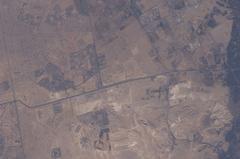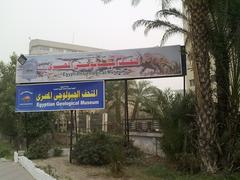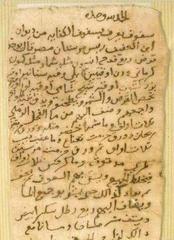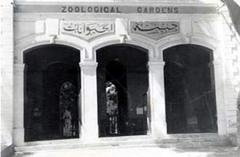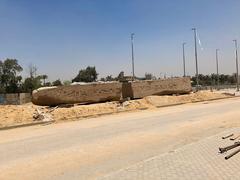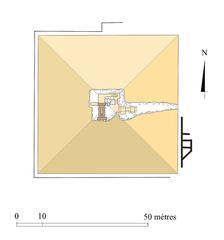Orman Garden Visiting Hours, Tickets, and Guide to Giza’s Historic Botanical Site
Date: 15/06/2025
Introduction
Orman Garden, located on the western bank of the Nile in Giza, Egypt, stands as a living testament to Egypt’s botanical heritage and urban modernization. Founded in 1875 under Khedive Ismail Pasha, the garden has evolved from a private royal estate into a cherished public botanical garden. Today, Orman Garden offers a unique blend of historical significance, diverse plant collections, tranquil landscapes, and community events, making it a must-visit destination for locals and tourists alike. This guide provides detailed insights into Orman Garden’s history, facilities, visitor information, and upcoming developments to help you plan an enriching visit (CairoScene, Egypt Today, International Scholars Journals, hurghadalovers.com, Zawya).
Historical Overview and Cultural Significance
Origins: Royal Vision and European Influence
Orman Garden was commissioned in 1875 by Khedive Ismail Pasha as part of his ambitious plan to modernize Cairo and create green spaces reflective of European capitals. Designed by the renowned French landscape architect Jean-Pierre Barillet-Deschamps, the garden originally served as a private royal estate, supplying the Khedive’s palaces with exotic fruits and ornamental plants. The estate’s name, “Orman,” is derived from the Turkish word for “forest,” echoing the Ottoman influence of the period (International Scholars Journals).
Transition to Public Garden
In 1917, Orman Garden opened its gates to the public and, by 1919, came under the management of the Ministry of Agriculture. Over time, its area was reduced as land was reallocated for Cairo University and the Giza Zoo, but the garden retained its core botanical and cultural value. Today, it covers approximately 28 feddans (about 29 acres) and serves as a vital green space for recreation and education (Egypt Today).
Architectural and Landscape Features
Orman Garden’s design is a blend of 19th-century European landscaping and traditional Egyptian horticulture. Key features include:
- Themed Sections: Including a rose garden, cactus gardens, rock garden, and a lotus pond.
- Historic Structures: Remnants of royal gates, a marble fountain, bandstand, and greenhouses.
- Walking Paths: Winding shaded avenues with benches and picnic spots, suitable for leisurely strolls (hurghadalovers.com).
Botanical Diversity and Scientific Importance
Home to over 600 plant species (representing 331 genera and 112 families), Orman Garden is a living repository of rare, endangered, and native flora. Notable collections include:
- Palms: Eleven genera, including endemic and imported varieties.
- Roses: A renowned, two-acre rose garden with heritage and modern cultivars.
- Cacti and Succulents: Extensive displays of drought-resistant species.
- Aquatic Plants: The lotus pond with papyrus and lotus, reflecting ancient Egyptian culture.
- Rare Trees: Species such as Latania lontaroides and Cycas beddomei, both endangered (International Scholars Journals, connollycove.com).
The garden also features a herbarium and small botanical museum with preserved plant specimens and historic artifacts from the Khedive and King Farouk eras (wikipedia.org).
Community Role and Events
Orman Garden is a center for community engagement and environmental education. Its most celebrated event is the annual Spring Flowers Exhibition, Egypt’s oldest flower show, attracting thousands each March–April with vibrant floral displays, plant sales, and horticultural workshops. The garden also hosts educational programs for children and students, promoting environmental stewardship (scoopempire.com).
Visitor Information: Hours, Tickets, and Directions
Visiting Hours (as of 2025)
- Monday to Thursday: 08:00–15:00
- Wednesday: 08:00–15:30
- Friday: 08:00–16:00
- Saturday: 08:00–18:00
- Sunday: 12:00–15:00
Note: Opening hours may change during holidays or events; always confirm before your visit (urtrips.com).
Ticket Prices
- General Admission: 5 EGP per person
- Discounts: May be available for students and seniors
- Children under 6: Free
Tickets are available at the entrance; no advance booking required (gardens.arbdar.com).
Location and How to Get There
- Address: Orman Botanical Garden, Gamaa Street, Giza, Egypt
- By Metro: Cairo University Station (Line 2), then a short walk
- By Taxi/Ride-share: Request “Orman Garden” or “Hadiqat al-Orman”
- By Car: Accessible via the Giza Corniche; parking onsite
Accessibility
- Wheelchair-accessible main paths; assistance available on request
- Shaded seating and rest areas throughout
- Public restrooms located at several points
Facilities and Amenities
- Seating and Picnic Areas: Benches and shaded lawns for families and groups
- Food Kiosks: Snacks and refreshments available onsite; nearby cafes for full meals
- Plant Sales: Purchase ornamental plants, succulents, and shrubs year-round at the nursery
- Security: The garden is fenced and monitored during opening hours
Key Attractions
- Rose Garden: Spectacular blooms, especially during the flower exhibition
- Cactus and Rock Gardens: Showcasing rare succulents and Mediterranean flora
- Lotus Pond: Aquatic plants with cultural and historical significance
- Walking Paths: Ideal for photography, birdwatching, and relaxation
- Herbarium and Museum: Historic plant specimens and royal artifacts
Renovations and Future Developments
A comprehensive revitalization is underway, with Orman Garden and the adjacent Giza Zoo set to reopen in September 2025 as a world-class botanical and cultural destination. Key features of the redevelopment include:
- Integration with Giza Zoo: New underground tunnel and gondola lift for seamless access (Zawya, CairoScene)
- Expanded Visitor Facilities: From three to fourteen service areas, with enhanced accessibility and security (SceneNow)
- Sustainability Initiatives: Eco-friendly irrigation, composting, and pest management
- Educational Centers: New interactive exhibits and family-friendly learning spaces
- Financial Investment: EGP 832 million, the largest cultural investment in Egypt’s history
- Soft Reopening: Planned for Eid Al-Fitr 2025; full reopening in September 2025 (SceneNow)
Frequently Asked Questions (FAQ)
Q: What are the current visiting hours for Orman Garden?
A: Generally from 8:00 AM to 6:00 PM, varying by day; check official sources for updates.
Q: How much are tickets?
A: 5 EGP per person as of 2025; discounts may apply for students and seniors.
Q: Is the garden wheelchair accessible?
A: Yes, main paths are accessible; assistance is available if needed.
Q: Can I buy plants at the garden?
A: Yes, at the garden’s nursery and during the Spring Flower Exhibition.
Q: Are pets allowed?
A: Pet policies vary; confirm with staff before visiting.
Nearby Attractions
- Giza Zoo: Adjacent and easily combined with a garden visit
- Cairo University: Historic campus nearby
- Pyramids of Giza: A short drive away
- Cairo Tower and Museums: Within 3–4 km for a full day of exploration
Practical Visitor Tips
- Best Time to Visit: Spring (March–April) during the flower exhibition; early mornings or late afternoons for milder weather
- What to Bring: Comfortable shoes, sun protection, camera, water, and cash for entry/plant purchases
- Etiquette: Respect plant life, dispose of litter responsibly, and ask for permission before professional photography
Visuals and Media
For the best experience, explore official photos, videos, and virtual tours available on the Orman Garden official website. Image alt tags such as “Orman Garden botanical diversity” and “Orman Garden Spring Flower Exhibition” are recommended for accessibility and SEO.
Contact Information
- Phone: 0109 686 2279
- Website: Orman Garden Official Website
Plan Your Visit
For the latest updates, download the Audiala app for interactive maps, event notifications, and exclusive offers. Stay connected through social media and trusted travel resources for real-time information on Orman Garden and Giza’s historical attractions.
Summary
Orman Garden is a vibrant blend of Egypt’s botanical, historical, and cultural legacy. Its unique plant collections, tranquil landscapes, and evolving facilities ensure a memorable experience for every visitor. With major renovations underway, the garden is set to become a world-class destination for education, conservation, and relaxation. Plan your visit today and discover one of Giza’s greenest and most storied treasures (Gardens.arbdar, CairoScene, Zawya).

